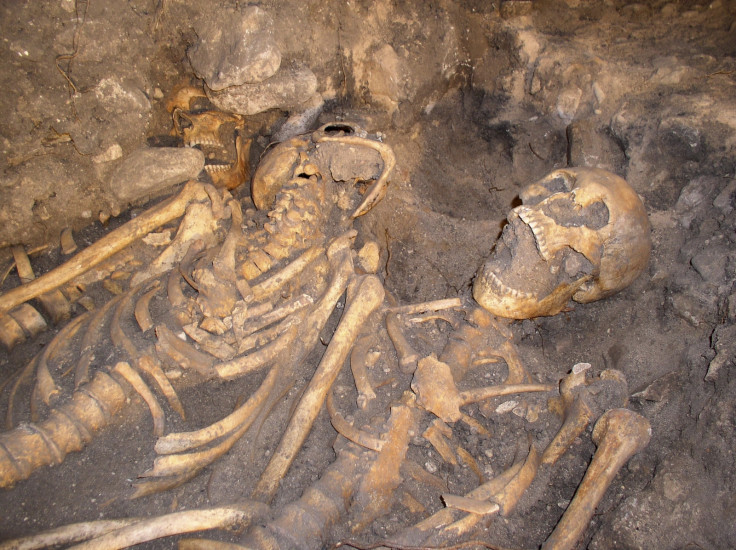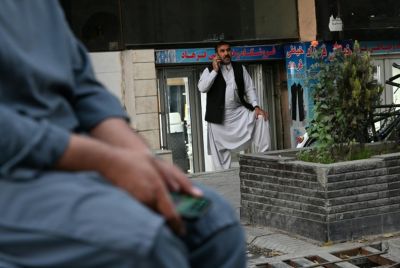The day Theresa May triggered Brexit was also the anniversary of England's bloodiest battle
The Battle of Towton in the Wars of the Roses claimed the lives of 1% of the English population.
At zero, the death toll when Theresa May triggered Article 50 on 29 March was much, much lower than at the Battle of Towton, which took place 556 years earlier to the day. But the event was no less momentous for the future of England.
By formally invoking Article 50 of the Lisbon Treaty, May kick-started a two-year process of the UK leaving the European Union (EU). After negotiations across trade, immigration, security and other crucial areas to establish a new relationship between the UK and EU, the country will exit the trading and political union on 29 March, 2019.
The UK's future is cloudy and uncertain. In Scotland, there is a renewed push for independence over Brexit. A hard border between Northern Ireland and the Republic of Ireland may drive the former out of the union. Brexit could break the United Kingdom, leaving just England and Wales.
Towton, a pivotal moment in the Wars of the Roses, is reputedly the single bloodiest battle in the history of England. After 10 hours of slaughter on the battlefield, 28,000 people are said to have died, many with grisly injuries inflicted by the heavy metal weaponry of medieval warfare. Some were massacred as they fled the fight.
At the time, England's population is believed by historians to have been just under 3 million, meaning – if the figures are accurate, and there is some debate among experts about their veracity –around 1% of the country's people died on that battlefield, which sits between Leeds and York.
Around 80,000 men fought, with the Yorkists, their symbol the white rose, and Lancastrians, a red rose, fairly evenly matched as they battled through what contemporary chroniclers say was a terrible storm of wind, sleet and snow.
The losses were so large that many of the dead soldiers were hauled into a mass grave at the site of the battle. Later archaeological excavations revealed the catastrophic wounds that led to their deaths. And there is evidence that some bodies were mutilated, their noses cut off, for example.

"Many of the individuals suffered multiple injuries that are far in excess of those necessary to cause disability and death," says the University of Bradford, which led excavations of 43 bodies at the site in 1996 under its Towton Mass Grave Project.
"From the distribution of cuts, chops, incisions, and punctures, it appears that blows cluster in the craniofacial area, in some cases bisecting the face and cranial vault of some individuals and detaching bone in others.
"Series of cuts and incisions found in the vicinity of the nasal and aural areas appear to have been directed toward removal of the nose and ears.
"There are few infra-cranial (torso and limb) injuries, which may suggest that these areas were not targeted, that these individuals were wearing armour, or that they sustained their injuries while in a position that did not allow them to defend themselves."
Towton changed the course of English history. The Wars of the Roses was a series of conflicts between two noble houses with rival claims to the English thrones. The Lancastrian king at the time, Henry VI of England, had signed over the right of succession to Richard, Duke of York, after he was captured in 1460 at the Battle of Northampton.
Richard died at the Battle of Wakefield on 30 December, 1460, and by the following March, his son Edward had claimed the throne because of the agreement Henry had signed to save his life. Henry, now liberated after his wife, Queen Margaret mustered an army in Scotland and the north of England, had to settle the matter once and for all.
After two battles – Mortimer's Cross and St Alban's – Henry's forces had been driven back into to Yorkshire by the Yorkists. And Edward, on the offensive, set off in pursuit for what would be the final battle to secure his reign — and that's exactly what he did at Towton. Edward IV, formally coronated in June 1461, was the first English king from the House of York.

"It is said that Towton was the largest and longest battle fought on British soil, though it seems likely that, even more than usual, the medieval chronicles grossly exaggerate both the numbers engaged and the casualties incurred at Towton," says the Battlefields Trust.
"What cannot be disputed is that Towton was of huge significant in both military and social terms. The political significance was also substantial, for it secured the throne for the Yorkists, although the Lancastrian cause was far from extinguished. Henry, his extremely ambitious wife Margaret, and his son and heir had all escaped."
The House of York left the throne when Richard III was killed at the Battle of Bosworth on 22 August, 1485, in the final confrontation of the Wars of the Roses. Henry VII, a descendant of the House of Lancaster, took the throne. Henry was married to Elizabeth of York. He founded the House of Tudor, whose symbolic rose merged both Yorkist white and Lancastrian red.
© Copyright IBTimes 2025. All rights reserved.






















